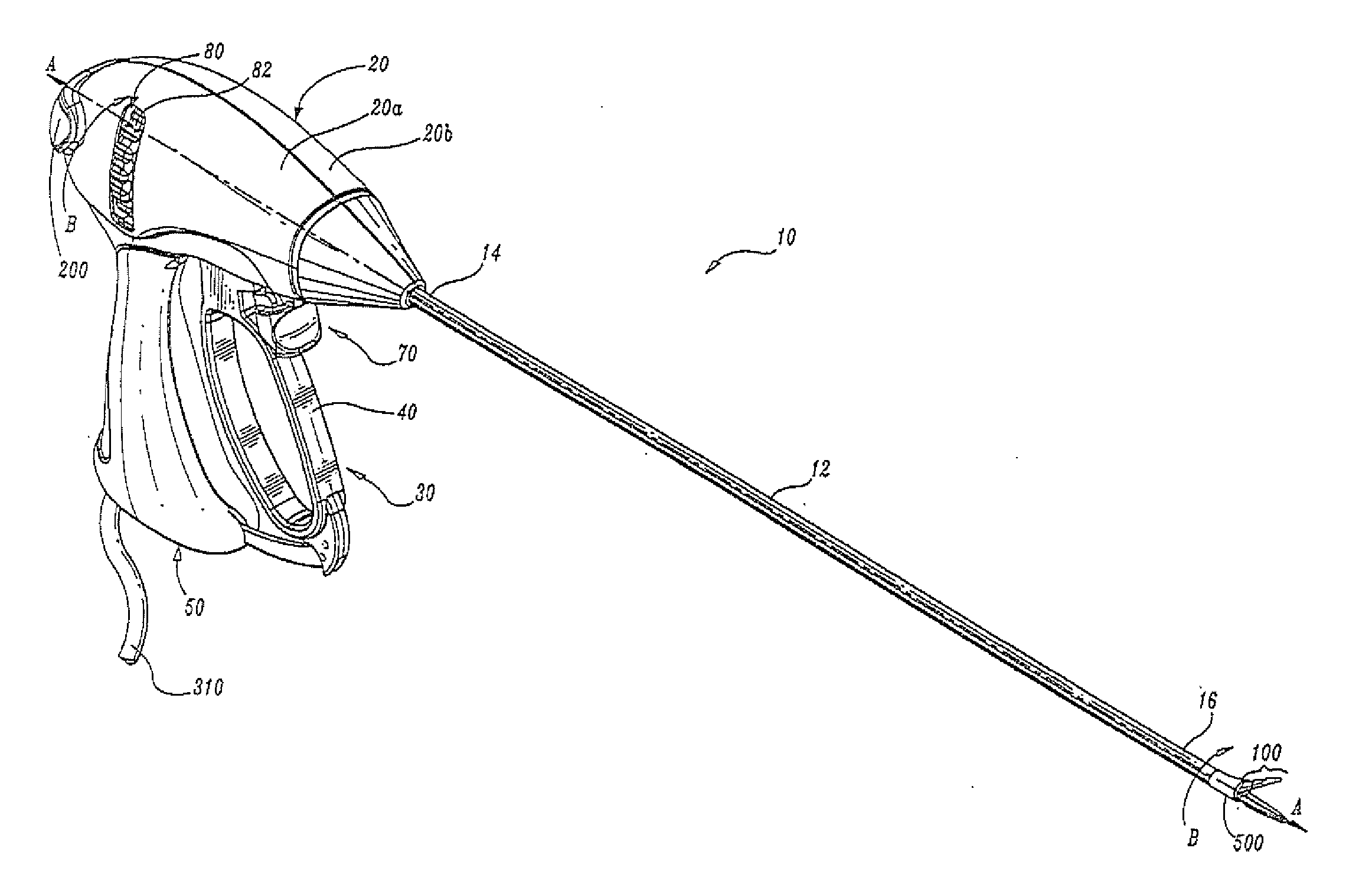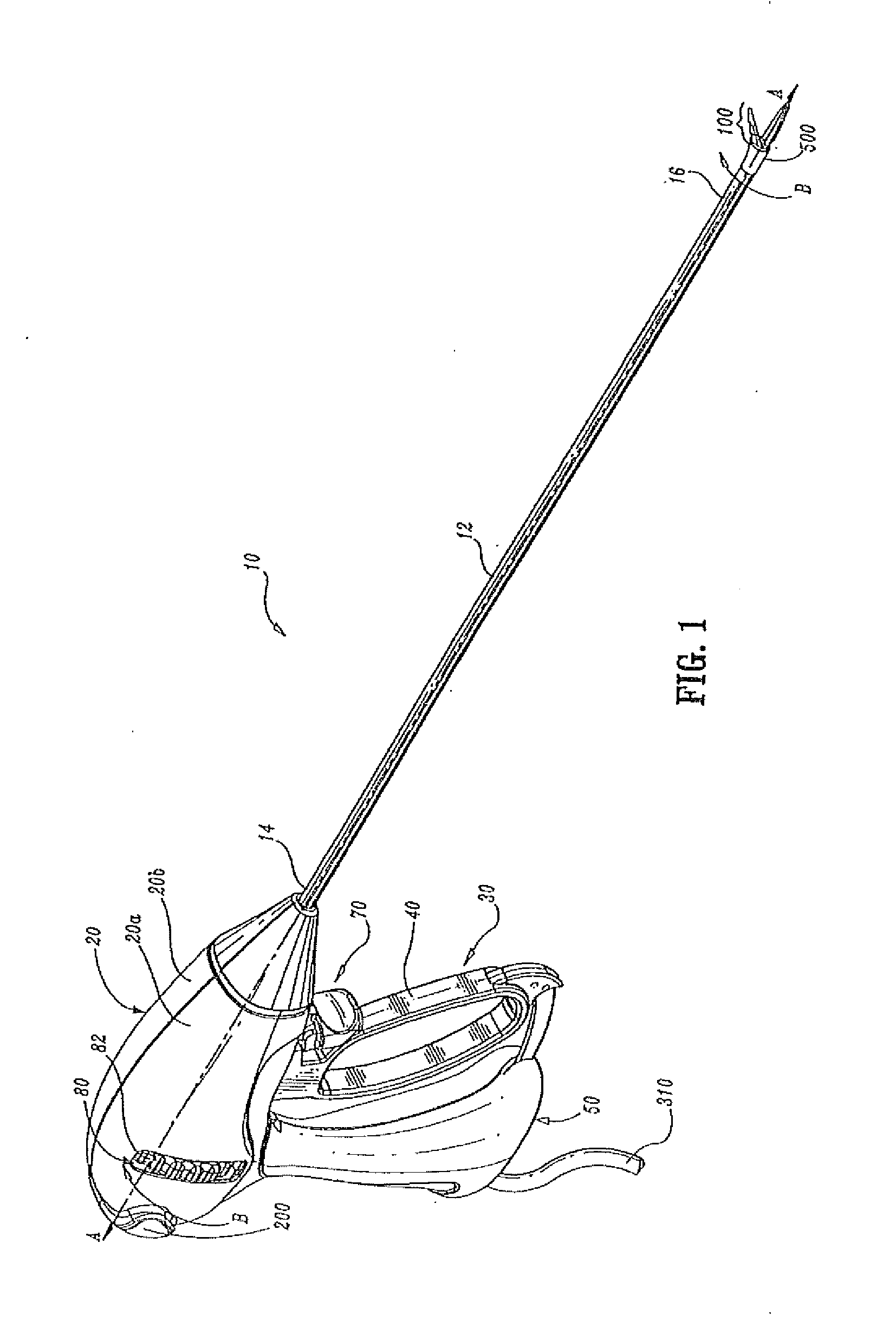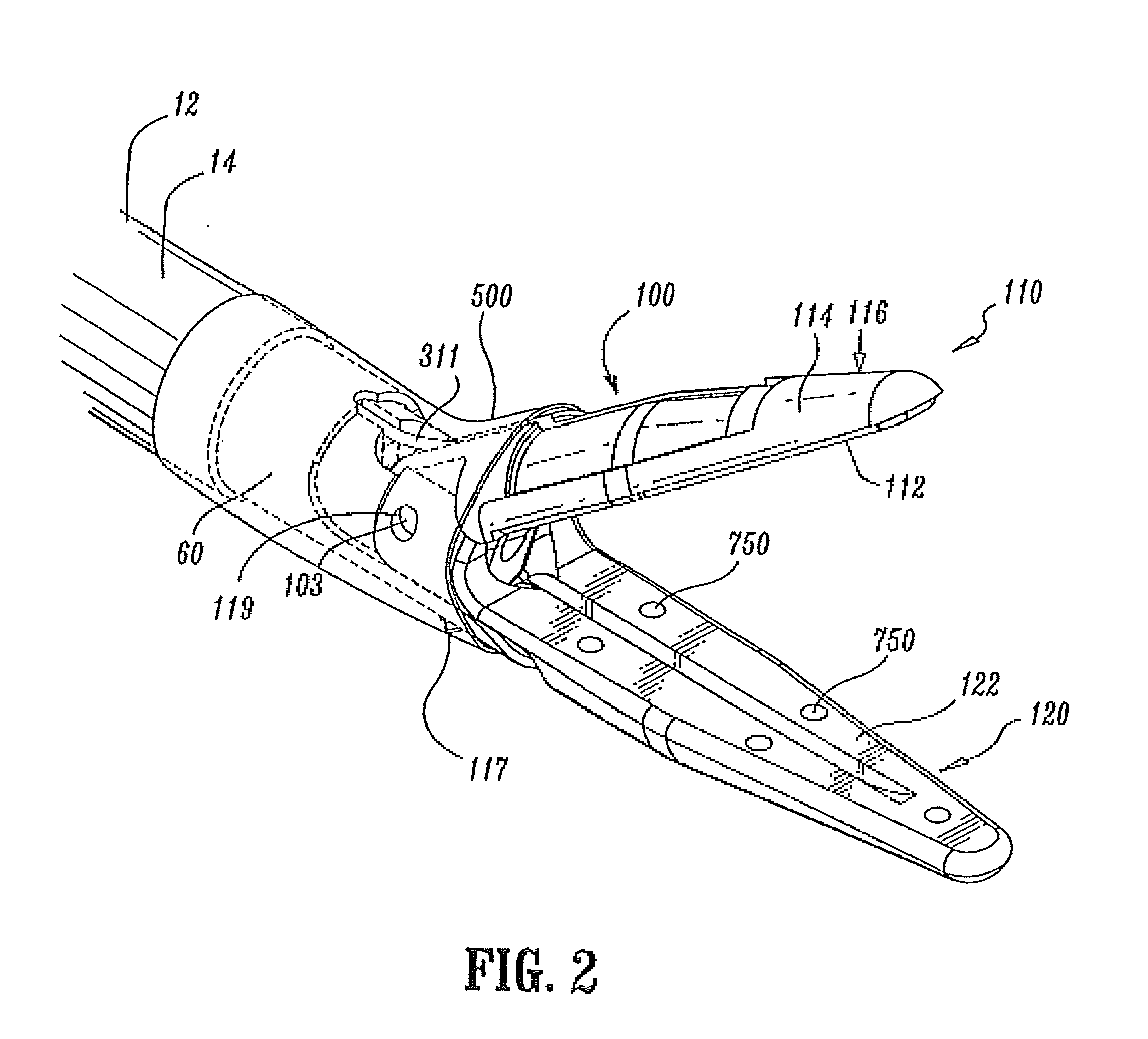Insulating Boot for Electrosurgical Forceps
a technology of electrosurgical forceps and boot, which is applied in the field of insulated electrosurgical forceps, can solve the problems of reducing the possibility of stray, reducing the effect of stray forceps, and reducing the potential of stray forceps
- Summary
- Abstract
- Description
- Claims
- Application Information
AI Technical Summary
Benefits of technology
Problems solved by technology
Method used
Image
Examples
Embodiment Construction
[0087]Referring initially to FIGS. 1-3, one particularly useful endoscopic forceps 10 is shown for use with various surgical procedures and generally includes a housing 20, a handle assembly 30, a rotating assembly 80, a trigger assembly 70, a knife assembly and an end effector assembly 100 that mutually cooperate to grasp, seal and divide tubular vessels and vascular tissue 420 (see FIGS. 18-19). For the purposes herein, forceps 10 will be described generally. However, the various particular aspects of this particular forceps are detailed in commonly owned U.S. patent application Ser. No. 10 / 460,926, filed on Jun. 13, 2003, and entitled “VESSEL SEALER AND DIVIDER FOR USE WITH SMALL TROCARS AND CANNULAS,” now U.S. Pat. No. 7,156,846, and previously mentioned U.S. patent application Ser. No. 10 / 970,307, now U.S. Pat. No. 7,232,440, the entire contents of each of which are incorporated by reference herein. Forceps 10 includes a shaft 12 that has a distal end 16 dimensioned to mechanic...
PUM
 Login to View More
Login to View More Abstract
Description
Claims
Application Information
 Login to View More
Login to View More - R&D
- Intellectual Property
- Life Sciences
- Materials
- Tech Scout
- Unparalleled Data Quality
- Higher Quality Content
- 60% Fewer Hallucinations
Browse by: Latest US Patents, China's latest patents, Technical Efficacy Thesaurus, Application Domain, Technology Topic, Popular Technical Reports.
© 2025 PatSnap. All rights reserved.Legal|Privacy policy|Modern Slavery Act Transparency Statement|Sitemap|About US| Contact US: help@patsnap.com



